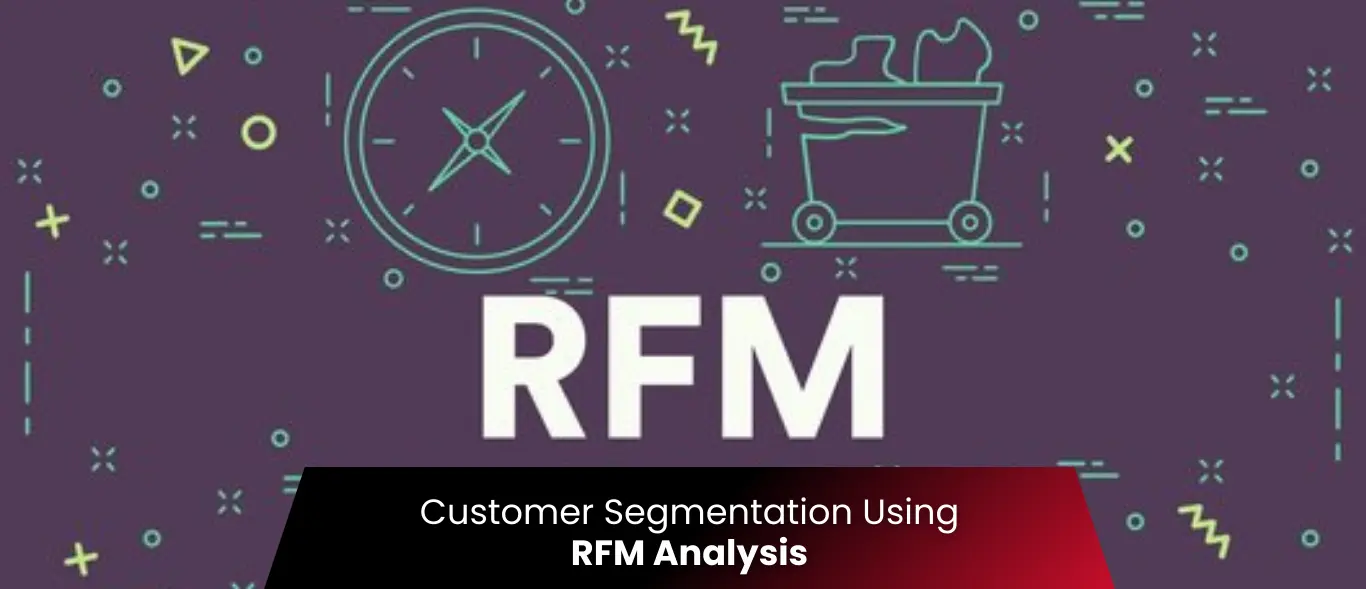If you run any kind of business, in order to make it successful, it’s a given that you need to know your customers. However, you first need to segment them. Segmentation can be accomplished in various ways, but one of the most effective methods is RFM analysis.
RFM stands for the Recency, Frequency, and Monetary value. This post will demonstrate how your business can utilize RFM analysis to effectively segment customers.
Different Types of Customer Segments
There are several ways to segment or categorize your audience or clients. The oft-used approach is to establish their Recency, Frequency, and Monetary values.
But what does that refer to? This means examining how recently customers have made a purchase, how frequently they make purchases, and how much they spend on each purchase.
RFM analysis-based customer segmentation is a great way to target marketing campaigns specifically to different groups of customers.
For example, customers identified as high-value and frequent purchasers can be targeted with loyalty programs or special discounts.
Other methods of segmentation include clubbing them together based on either their common geographical location, gender, or age.
By segmenting your audience, you can better target your marketing efforts and increase your chances of making a sale.
In addition to Recency (how recently they made a purchase), Frequency (how often they make purchases), and Monetary value (how much they spend per purchase), other methods of customer segmentation include demographic segmentation (based on factors like age, gender, income, etc.) and behavioral segmentation (based on factors like brand loyalty, web browsing behavior, etc.).
- High-value customers: These are customers who have made a purchase within the last month and have a high monetary value per transaction. They are likely to be more loyal to your business and are therefore more profitable.
- Medium-value customers: These are the customers who have made a purchase within the last six months and who have a medium monetary value per purchase. They are also likely to be more loyal to your business, but are not as profitable as high-value customers.
- Low-value customers: These are customers who have made a purchase within the last 12 months and have a low monetary value per purchase. They are less likely to be loyal to your business and are more likely to churn.
Learn how leading brands still use RFM to increase retention >>>> Get Started Now
Why is Customer Segmentation Important?
Customer segmentation is the process of dividing customers into groups based on shared characteristics. There are various ways to segment customers, but as we mentioned earlier, one common method is the RFM analysis.
Information from this analysis can be used to create customer classifications.
For example, a business might segment its customers into three groups: those who have purchased within the last month (high-value customers), those who have purchased within the last six months (medium-value customers), and those who have not purchased in the last six months (low-value customers).
By understanding which segment a customer falls into, a business can then tailor its marketing and advertising efforts accordingly. Ultimately, this leads to more sales and more efficient use of marketing resources.
How Do You Target Customers with RFM?
There are several ways to target customers using RFM analysis. The first step is to segment your customer base using RFM criteria.
The purpose is to use customer purchase data to gain insights into customers’ motivations and preferences.
By learning what customers are buying and why, businesses can gain a deeper understanding of the types of products and services they are interested in.
This can then be used to help businesses develop and implement more effective marketing campaigns.
Once you have segmented your customers, you can then target them with specific marketing campaigns and offers that are tailored to their needs and preferences.
Additionally, you can use RFM analysis to identify your most valuable customers and target them with loyalty programs and other incentives. By understanding your customers better and targeting them more effectively, you can increase your sales and profits.
What are the Benefits of RFM Analysis?
RFM analysis is a technique used to segment customers based on their purchase history. By segmenting customers based on these three factors, businesses can more effectively target their marketing efforts.
One major way in which your marketing can be made more effective is by trying to figure out the “value” of each customer. Called ‘Customer Lifetime Value (CLV), there are many models that measure this metric.
To develop such an effective model of customer profitability, you need to answer the question: Who are my most profitable customers?
RFM analysis is just one way businesses can help identify which customers are most valuable and which ones are at risk of churning. By understanding which customers are most likely to make a purchase, businesses can create more effective marketing campaigns and increase their chances of making a sale.
Finally, RFM analysis can help businesses to identify which customers are most likely to be loyal to their business. By understanding which customers are most likely to make a future purchase, businesses can develop more effective customer retention strategies and increase their chances of making a sale.
Learn how leading brands still use RFM to increase retention >>>> Get Started Now
How can RFM Analysis specifically help My Business?
To start, the first thing RFM analysis can do is help you understand your customer base. This information can help you improve your marketing efforts, thereby enhancing your chances of making a sale.
RFM analysis can also help you identify which customers are more likely to make a purchase. This information can help you to create more effective marketing campaigns and improve your chances of making a sale.
Obviously, once your most profitable customers are identified in this scientific way, your business can plan how much more to upsell or cross-sell to them.
By understanding purchase patterns, you can send relevant product recommendations, timed offers, and personalized emails. RFM insights make your communication feel more like a conversation than a sales pitch.
Conclusion
It’s a given that if you want to run a business successfully, you have to know your customers. Segmenting them is the first step. One of the most effective ways to segment is through RFM analysis. RFM stands for the Recency, Frequency, and Monetary value. This post has demonstrated how your business can utilize RFM analysis to effectively segment customers.


